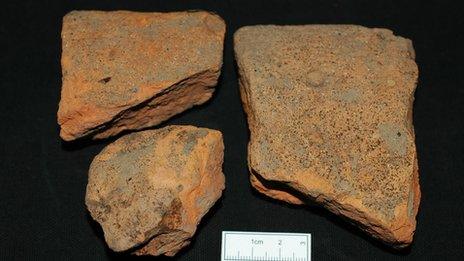Wigtownshire Iron Age discovery forces history re-think
- Published
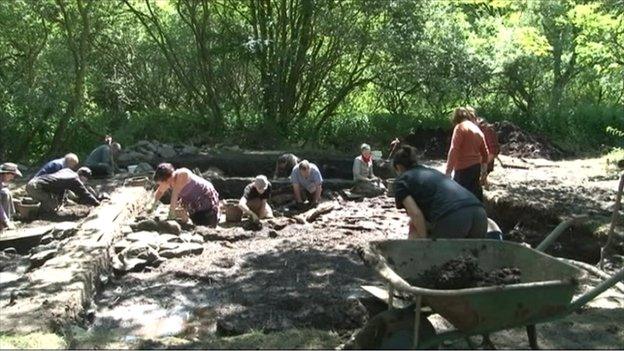
Local volunteers have joined archaeologists at the site of the Iron Age settlement
The discovery of an Iron Age settlement has forced a re-think of the early history of the south of Scotland.
Archaeologists believe that the group of round houses found in Dumfries and Galloway date back to the fifth century BC.
It proves that people lived in Wigtownshire long before Ninian set up a church at Whithorn in 397AD.
Local volunteers have joined experts in a three-week long excavation of the site at Black Loch of Myrton.
Julia Muir-Watt, of the Whithorn Trust, said the discovery of the round houses has had a significant impact on the accepted history of the region.
She said: "We are looking at a complete re-writing really of the early history of Whithorn and indeed southern Scotland.
"We think there is a very different history to the way Christianity came to southern Scotland.
"We originally thought that Ninian came to an empty area where he founded a church and now we think there was a strong native community, potentially a high status secular site where Christianity came because people converted.
"And so we're very interested in finding out about the peoples who lived here long before the Christian period."
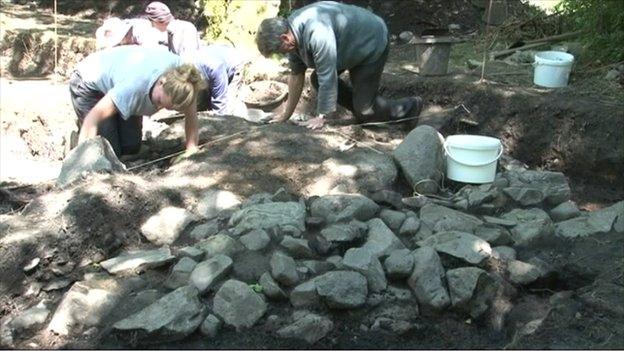
Experts believe the round houses date back to the fifth century BC
The site under excavation was originally thought to be the site of a lone crannog, an ancient loch dwelling.
During a dig in 2013 however, the archaeologists said they made a "spectacular" find.
They claimed to have discovered the best-preserved loch village known in Scotland, comparable with sites in Glastonbury and Meare in Somerset.
The current excavation is the third at the site since 2010. It is being led by Graeme Cavers, of AOC Archeology.
He said: "It's very rare for us to find something like this which is effectively just a roundhouse built on to the bog itself without any foundations at all.
"It looks like there has been seven or eight of these buildings, and very possibly more.
"The traces we can see on the surface are really just mounds but we take it that these are signs of other buildings on the settlement."
He added: "This is very early Iron Age so we are dealing with quite settled farming communities so these people would have been farming these fields around them, they would have had herds of livestock which they would have been managing as well.
"[They were] settled, quite sophisticated communities with the landscape very much in hand agriculturally."
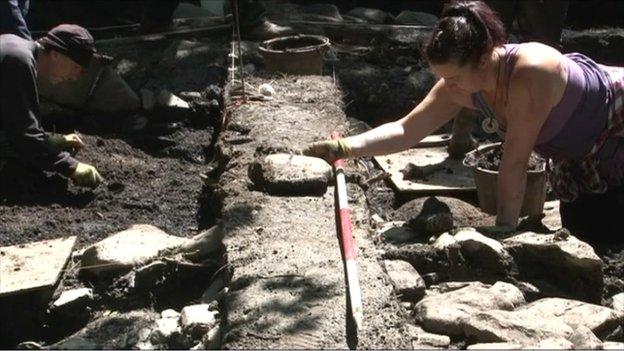
The discovery appears to prove that people lived in Wigtownshire many years before Ninian arrived
One of the volunteers taking part in the excavation was John Picken, a former curator of Stranraer museum.
He said: "What I am digging is compressed leaf litter. What they must have done is put down these layers of reeds and leaf and over the centuries it's got compressed to make this wonderful hard surface.
"Digging it, we just peel it off and beneath it the original woodwork just appears. It looks almost like it's been laid yesterday."
During the current project, the team has excavated about a quarter of one round house.
With evidence of several more, there is the potential for much more work for archaeologists.
Ann Crone, of AOC Archaeology said: "There is a lot more here to explore and the preservation is so good that any investment in further excavation is going to yield fantastic results but at the moment I don't know how long it will go on for."
- Published30 August 2013
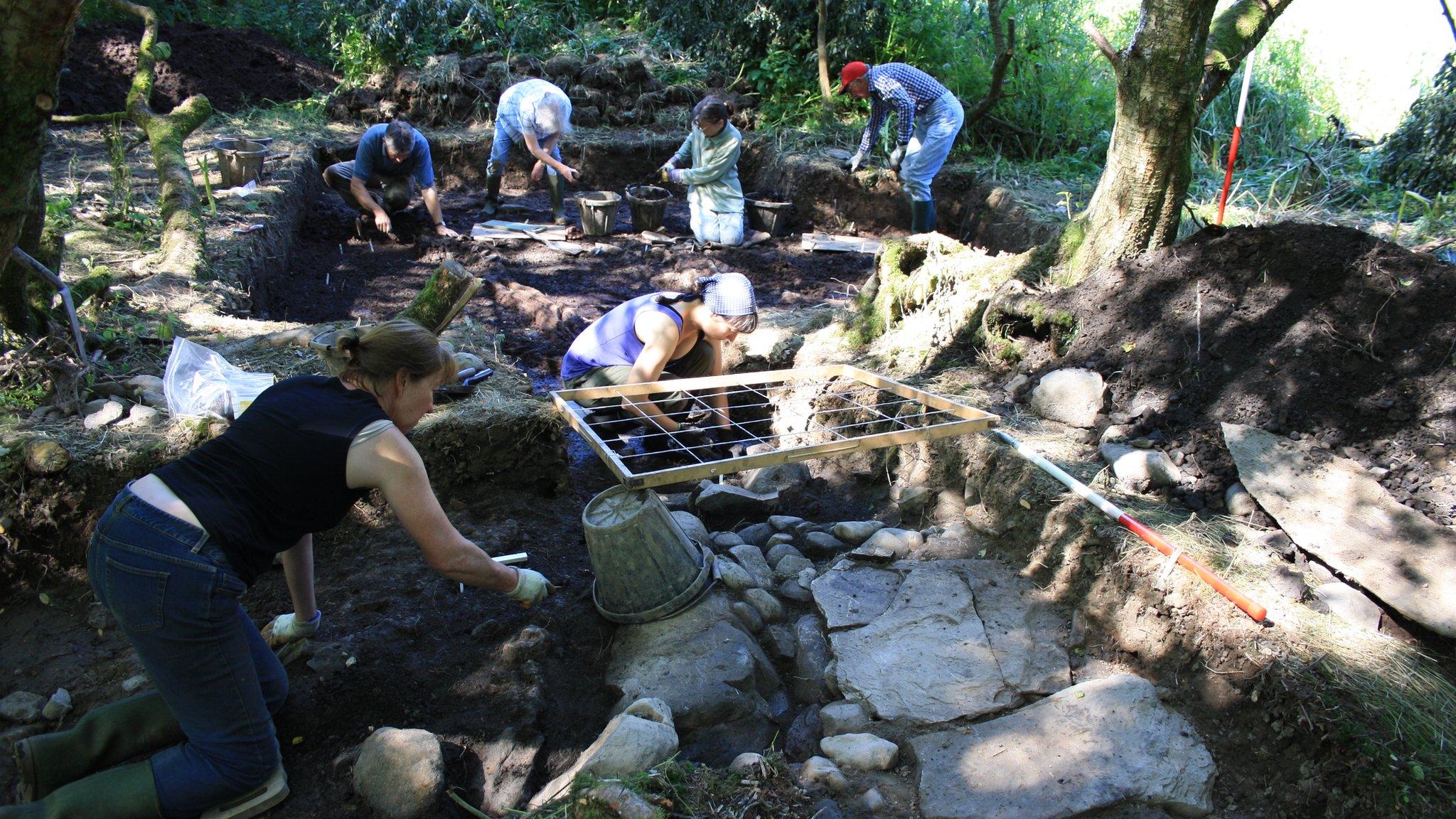
- Published3 March 2012
